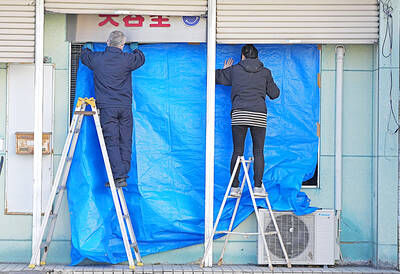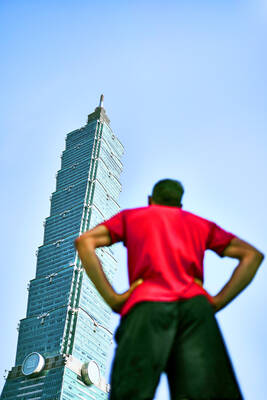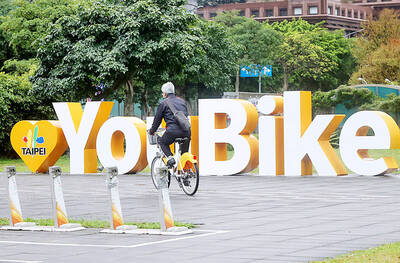Skeletal remains found earlier this month in Taroko National Park have been identified as those of a foreign tourist who went missing with his wife after a magnitude 7.2 earthquake struck Hualien on April 3 last year.
According to police statements at the time, the man, Sim Hwee Kok, and his wife, Neo Siew Choo, were Singaporean-Australians in their 40s who had traveled to the Hualien area as tourists.
They were last seen exiting a tour bus at the entry to Shakadang Trail in Taroko Park less than an hour before the quake on April 3, likely putting them near the trail's Wujianwu section, about 1.5km from the entrance, when the earthquake struck, authorities said.

Photo courtesy of the police
Due to the extensive damage to the trail, multiple searches by Hualien police failed to locate the couple, and last month, the Hualien District Court issued death certificates for the couple following requests by their family members.
In a statement today, the Hualien County Police Bureau said a farmer had reported finding suspected human bones in a riverbed near Wujianwu on Jan. 11.
After hiking four hours into the area to retrieve the remains, authorities compared the DNA from a hip bone to samples they had collected from the missing couple's family members, allowing them to identify the bone as Sim's, the police bureau said.
Although much of the trail area was buried by landslides during the earthquake, typhoon rains later that year may have washed the remains into the riverbed, the bureau said.
Despite searches of the surrounding area, no other human remains, including those of Sim's wife, were found, it said.
The magnitude 7.2 Hualien earthquake struck at 7:58am on April 3 last year, killing 18 people and injuring more than 1,100.
It was Taiwan's largest earthquake since 1999.

Taiwanese were praised for their composure after a video filmed by Taiwanese tourists capturing the moment a magnitude 7.5 earthquake struck Japan’s Aomori Prefecture went viral on social media. The video shows a hotel room shaking violently amid Monday’s quake, with objects falling to the ground. Two Taiwanese began filming with their mobile phones, while two others held the sides of a TV to prevent it from falling. When the shaking stopped, the pair calmly took down the TV and laid it flat on a tatami mat, the video shows. The video also captured the group talking about the safety of their companions bathing

US climber Alex Honnold is to attempt to scale Taipei 101 without a rope and harness in a live Netflix special on Jan. 24, the streaming platform announced on Wednesday. Accounting for the time difference, the two-hour broadcast of Honnold’s climb, called Skyscraper Live, is to air on Jan. 23 in the US, Netflix said in a statement. Honnold, 40, was the first person ever to free solo climb the 900m El Capitan rock formation in Yosemite National Park — a feat that was recorded and later made into the 2018 documentary film Free Solo. Netflix previewed Skyscraper Live in October, after videos

Starting on Jan. 1, YouBike riders must have insurance to use the service, and a six-month trial of NT$5 coupons under certain conditions would be implemented to balance bike shortages, a joint statement from transportation departments across Taipei, New Taipei City and Taoyuan announced yesterday. The rental bike system operator said that coupons would be offered to riders to rent bikes from full stations, for riders who take out an electric-assisted bike from a full station, and for riders who return a bike to an empty station. All riders with YouBike accounts are automatically eligible for the program, and each membership account

A classified Pentagon-produced, multiyear assessment — the Overmatch brief — highlighted unreported Chinese capabilities to destroy US military assets and identified US supply chain choke points, painting a disturbing picture of waning US military might, a New York Times editorial published on Monday said. US Secretary of Defense Pete Hegseth’s comments in November last year that “we lose every time” in Pentagon-conducted war games pitting the US against China further highlighted the uncertainty about the US’ capability to intervene in the event of a Chinese invasion of Taiwan. “It shows the Pentagon’s overreliance on expensive, vulnerable weapons as adversaries field cheap, technologically